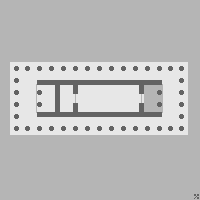The Lord Speaks Again: Ancient Temple Patterns in D&C 124
It is my honor and pleasure to introduce a new guest blogger to TempleStudy.com, Matthew B. Brown. Many of you may already be familiar with the great work of this historian, scholar, and author. If you are not, I heartily recommend his work to you. One of my favorite books on the temple is by Br. Brown, The Gate of Heaven: Insights on the Doctrines and Symbols of the Temple. A big thanks to Br. Brown for sharing his insights with us here on TempleStudy.com. -Bryce
Guest Blogger: Matthew B. Brown holds a degree in history from Brigham Young University in Provo, Utah. He is the author of ten books and has published articles with the Neal A. Maxwell Institute for Religious Scholarship at BYU (aka FARMS). Matthew serves as a volunteer researcher, editor, and respondent for The Foundation for Apologetic Information and Research (FAIR) and has spoken at several of their annual conferences. He has also been featured on TV and radio programs as well as at a number of seminars and symposiums.
On 19 January 1841 the Lord issued an important revelation through the Prophet Joseph Smith which is now known as Doctrine and Covenants section 124.1 There are many verses within this revelation where the Lord describes concepts associated with the Nauvoo temple. These concepts can be placed under five general categories so that they can be more easily evaluated: The Lord’s People, The Lord’s Commands, The Lord’s House, The Priesthood, and The Ordinances. This article is calculated to help students of the past more accurately understand what (and how much) the Lord revealed about the temple in Nauvoo, Illinois by the first month of the year in 1841. It is also designed to show intriguing connections between the Mormons who lived in the first half of the nineteenth century and what took place among the covenant people of the biblical period. [Read more…]




